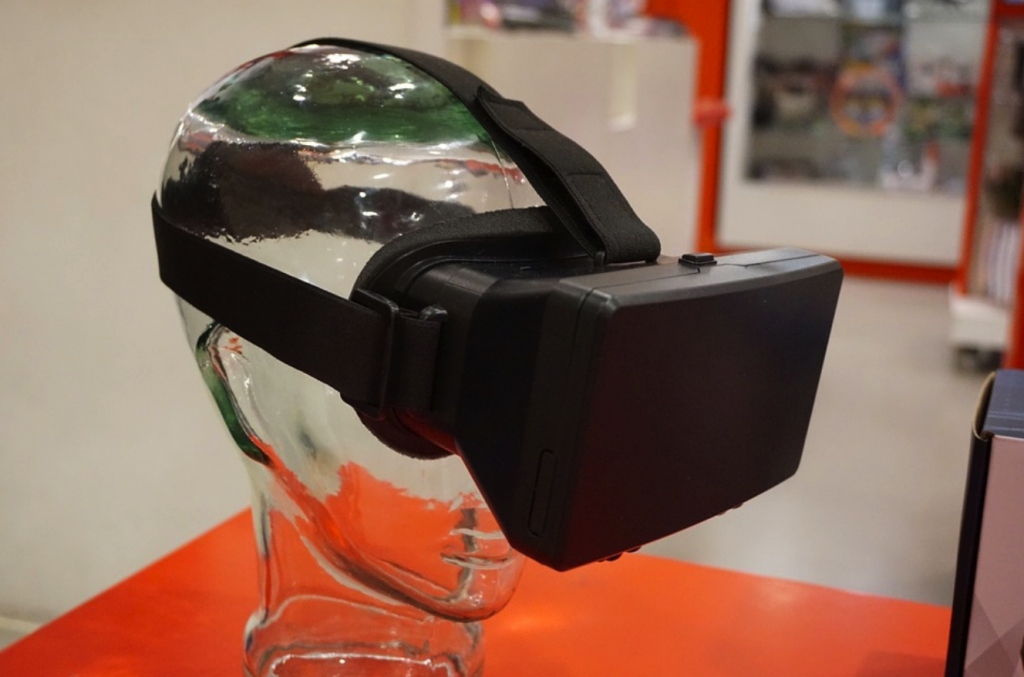A VR headset is the latest must have gadget for any self-respecting techie, whether you want it to play the best VR games for Android, or for taking virtual tours of the world’s best museums. While the VR technology is becoming more affordable, a headset is still not a cheap piece of kit. If you’re considering buying one, it’s important to go into the purchase well-informed, so you can make the best choice and get the best product for your money.

Do You Want Tethered Or Mobile?
A tethered headset, like the Oculus Rift or the Playstation VR, connects to your PC or gaming console. These headsets are not cheap, usually running into hundreds of dollars, as they come with all kinds of extra kit like custom display screens, motion sensors and lenses. The high cost can be worth it if you’re a very serious gamer who plays a lot of high-end games, making the extra cost and kit worth it.
Mobile headsets, like the Google Cardboard, are cases that you put onto a smartphone. As the lens is the only really important part, these headsets are usually much cheaper than the tethered version. They tend to be more lightweight too, as they’re designed to be portable. Instead of being connected to your console, you’ll be able to take your games on the road. As they’re cheaper, the quality is sometimes lower, and you won’t always be able to play the latest VR games.
If you have a higher budget, play a lot of newer games and love to be an early adopter of new tech, then the tethered option might be the best option for you. For more casual gaming, use on the go and lower budgets, stick with the mobile version. The price difference can be pretty big, but the technology is improving all the time even on cheap options, so don’t discount them.
Does Your Phone Or PC Meet The Hardware Requirements?
As a general rule, a newer or more expensive PC or phone, the better the chance is that it’s already capable of handling VR. You can get an idea of whether yours is ready with this guide from Oculus. The requirements for most VR devices are pretty similar, but as a basic guide, you’ll need to check your graphics card, processor and memory are up to the task. Some devices will also require a certain connection type or number of USB ports, so double check before you buy.
For phones, the demands are similar, but the screen size is a key feature. One of the most flexible is the Google Cardboard, so start here if you’re not sure. Your phone will need a built-in motion sensor, but most newer phones will have this.
Can You Afford It?
VR technology is generally still quite expensive. As well as the cost of the device itself, you might have to factor the cost of a new console or phone, or upgrades to your PC. Mobile VR headsets are cheaper than tethered options, using coming in at under $100. Low-end Cardboard options can be snapped up for under $10.
If you heart is set on a higher end device, but you don’t have the budget, look out sales or deals. Most headsets can be bought on Amazon, which often runs deals on electronics. Put a watch on you dream headset and wait.
How Much Does It Weigh?
As a rule of thumb, you want a headset that is reasonably light. As it’s going to be attached to your face, lighter is better so it’s comfortable to wear and play with for longer periods. You don’t want to have to stop playing before you’re ready because the headset is too heavy and uncomfortable.
Look for a headset that has its weight well distributed across the shape and the straps that attach it to you. This can make even a heavier headset feel much lighter, whereas poor weight distribution will make the set feel like it;s all resting on the bridge of your nose. Try a few one; what’s comfortable for you may be different than what works for other people.
Too light can be a problem too. Viewers made of card are very light, but are too flimsy to attach any straps to, so you have to hold them up the whole time you’re using them.
How Do You Control The Headset?
The controls can differ enormously between different headsets, so try a few to see which you prefer. The best options have external sensors that you can put up around the room, with motion sensitive controllers, allowing you to walk around inside a virtual environment. Different headsets have slightly less range of motion or less spatial awareness.
Others come with simple buttons on the headset itself, or with remotes. Some are touch screen. Some Cardboard-compatible apps don’t need any controls at all. Many of them are passive experiences, like video or roller coaster VR experiences.
Before deciding on buying a VR headset, try out as many as you can. VR headsets are often shown at technology conferences, or may be able to try them in store. If you friends own one, ask to test theirs out and see if you like it. Before investing, try a few different brands and options to see what suits you. Try tethered and mobile, with different kinds of controls and test out a few kinds of games to be certain you’ll get plenty of use out of your new toy.
To save some money, look out for deals and shop around for the best price for the headset you eventually settle on. If you can, buy from somewhere with a good returns policy, in case you don’t get on with the device you first choose. Once you’ve found the right device for you, take out a warranty policy to protect your new prize possession, and remember to add it to your insurance if you’ve opted for one of the higher end headsets.

Be First to Comment